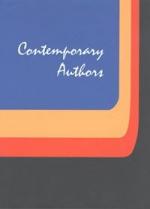|
This section contains 2,829 words (approx. 10 pages at 300 words per page) |

|
SOURCE: "The Later Poetry of Judith Wright," in Southerly, Vol. 25, No. 3, 1965, pp. 163–71.
Here, Wilkes defends Wright's third and fourth volumes of poetry, The Gateway and The Two Fires, contending that the two collections represent an expansion in Wright's poetry, an attempt "to reach beyond the immediate experience, to probe its significance. " Additionally, Wilkes examines the significance of two later collections, Birds and Five Senses, in Wright's body of work.
The Recognition so quickly won by Judith Wright's early work, in The Moving Image (1946) and Woman to Man (1949), has proved strangely prejudicial to her later verse. The Moving Image was a volume in which sense perceptions were held and explored, the titles of the poems reading like a series of talismans—"Trapped Dingo", "Bullocky", "The Surfer", "Nigger's Leap: New England"— and their impact coming from the sheer individuality of perception:
South of my days' circle, part of my blood's...
|
This section contains 2,829 words (approx. 10 pages at 300 words per page) |

|


